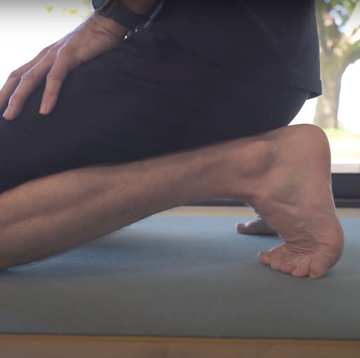Last week, I glanced at the abstract of a new study on runners and lower back pain, and thought “Meh.” Then, on Sunday morning, while pulling a canoe into the water, I felt a distinct twinge in my lower back. I’ve been unable to run this week with what I presume is a strained back muscle - and suddenly, that study looks awfully interesting.
It’s a trial from researchers in Singapore, published in Medicine & Science in Sports & Exercise, that compares three different exercise protocols for runners suffering from chronic lower back pain. And the results are indeed intriguing.
The study group consisted of 84 recreational runners who were selected because they were on a hospital waiting list for physical therapy for their lower back pain. They’d all had back pain for at least three months, and ran two to five times per week.
They were assigned to one of three eight-week exercise programs, including two supervised exercise sessions per week and home sessions on other days:
1/ What is overpronation.
2/ Lumbar extensor exercises: This focused on the back muscles that allow you to arch the lower spine, and included exercises like back extensions and “bird dogs.”
3/ Lumbar stabilisation exercises: Rather than focusing on the muscles that move the back, this focused on the core muscles that support the lower spine and keep it stable, with single-leg balance exercises, sitting on balance balls, and theraband resistance exercises.
The pet theory that the researchers wanted to investigate is that leg exercises might be a better bet than the more typical back exercises that are usually prescribed. They did an earlier study suggesting that runners with chronic lower back pain have weaker-than-normal quads, which could in turn lead to worse shock absorption during running and more stress on the lower back. So can strengthening those weak leg muscles fix things?
The results weren’t all that definitive, but overall the leg exercises performed well. After six months, all three groups had improved their pain scores by a similar margin of about 3 points (from just over 3 to just above 0) on a 10-point scale. On a 10-point functional scale of “self-rated running capability,” the leg exercise group came out significantly ahead, improving by about 3.8 points (from just over 6 to just under 10) after six months, compared to 3 or less for the other two groups.
As you’d expect, the leg exercises produced a greater improvement in quadriceps strength - which, the researchers suggest, enabled their legs to provide better shock absorption during running, and is why they reported greater improvements in the self-reported functional scale.
More surprisingly, there was little or no difference among groups in measures of back strength, either for extensors or stabilisers. So doing a series of leg-strengthening exercises appeared to tax the back muscles just as effectively as back-specific exercises, while the converse wasn’t true.
What can we conclude from this? Well, the good news is that after six months, everyone was pretty much back to normal (near 0 on pain and 10 on running function). The bad news is that there was no control group, so we don’t really know if the same results would have happened with no intervention at all.
As for the differences among the three groups, they’re also subtle at best. Still, in a situation where no one really knows the “right” answer - the causes and treatments for lower back pain remain vague and poorly defined - I can’t deny that this study will probably influence my own actions once my back has settled down enough to start some rehab. If leg exercises help strengthen the legs and the back, it seems like a win-win situation.













